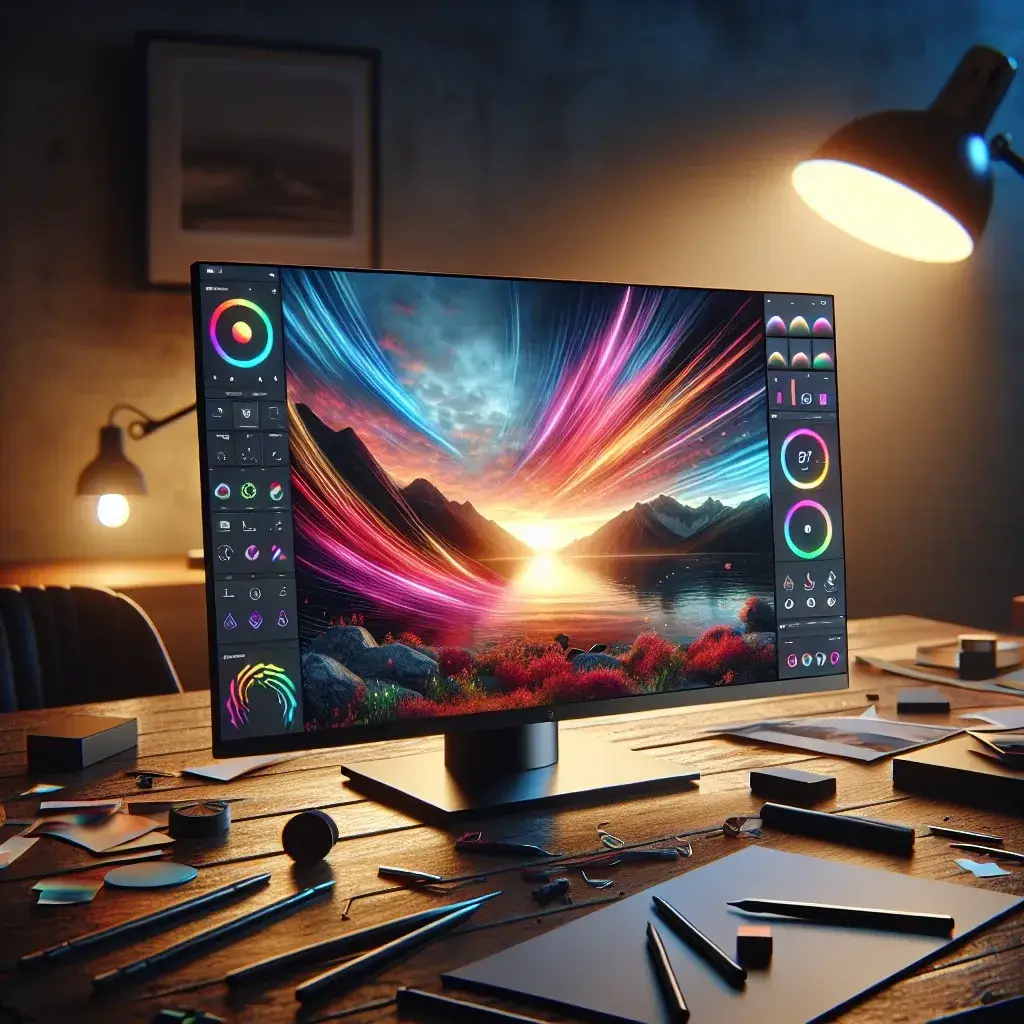When it comes to photo editing, using an OLED monitor can provide exceptional color accuracy and vibrant displays. However, to make the most out of your OLED monitor, it’s crucial to configure the settings correctly. Below, we delve into the essential settings for an OLED monitor tailored specifically for photo editing.
| Setting | Recommended Value/Range |
|---|---|
| Brightness | 120-140 cd/m² |
| Contrast | 50-70% |
| Color Temperature | 6500K |
| Gamma | 2.2 |
| Color Calibration | Custom (Using a Hardware Calibrator) |
Brightness
Brightness is a crucial component when it comes to photo editing as it impacts how well you can see the finer details in your images. For an OLED monitor, it’s recommended to set the brightness between 120 and 140 cd/m². This range provides a comfortable viewing experience without compromising the image’s quality.
Contrast
Finding the right contrast setting is essential to achieve a balanced visual output. Typically, a contrast setting between 50% and 70% works best for photo editing. This range ensures that you have excellent differentiation between dark and light areas, without leading to overexposed highlights or underexposed shadows.
Color Temperature
The color temperature directly affects how colors are perceived on your screen. For photo editing, a color temperature of 6500K is generally recommended as it is the standard for daylight balanced lighting. This setting helps ensure that the colors you see on your screen closely match what will appear on prints or other displays.
Gamma
The gamma setting controls the midtones of your images. A gamma setting of 2.2 is considered the standard and is widely used in the photo editing industry. This ensures a balanced representation of shadows, midtones, and highlights.
Color Calibration
Accurate color calibration is critical for precise color editing. Using a hardware calibrator, such as a Colorimeter or Spectrophotometer, is highly recommended. These devices help calibrate your monitor to produce accurate colors and ensure consistency across different devices.
Steps for Color Calibration
- Install the calibration software provided by the hardware calibrator manufacturer.
- Connect the calibrator to your computer and follow the software’s instructions.
- Place the calibrator on your monitor as directed and run the calibration process.
- Save the resulting calibration profile and apply it to your monitor settings.
Advanced Settings
RGB Settings
Fine-tuning the Red, Green, and Blue settings can help achieve more accurate colors. It’s often best to start with the default settings and make minor adjustments as needed based on test images or calibration results.
Sharpness
While sharpness can enhance the clarity of your images, setting it too high may introduce unwanted artifacts. A medium sharpness level is generally recommended and can be adjusted to preference.
Uniformity Compensation
Some OLED monitors come with a uniformity compensation feature, which ensures that the brightness and color are consistent across the entire screen. Enable this feature if available to achieve the best results for photo editing.
Best Practices
To maintain the optimal performance of your OLED monitor, follow these best practices:
- Regular Calibration: Perform color calibration every few weeks to maintain color accuracy.
- Avoid Direct Sunlight: Position your monitor away from direct sunlight to prevent glare and reflections.
- Use a Monitor Hood: A monitor hood can help minimize ambient light and reduce reflections on the screen.
- Work in a Controlled Lighting Environment: Consistent, controlled lighting enhances your ability to edit photos accurately.
Conclusion
Configuring your OLED monitor with the best settings ensures superior color accuracy and an enhanced photo editing experience. By adjusting brightness, contrast, color temperature, gamma, and performing regular color calibration, you can achieve a high level of precision and professionalism in your photo editing work. Always remember to follow best practices for maintaining your monitor’s performance, and you will enjoy consistent, high-quality results in your photo editing endeavors.

